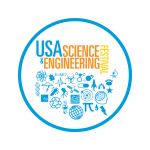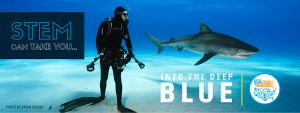
Astronaut
NASA
Fun Fact – she set a record for the longest single spaceflight by a woman with a total of 328 days in space and participated in the first all-female spacewalks. Plus, she’ll be the first woman to go to the moon!
Summary:
Christina Hammock Koch was selected as an astronaut by NASA in 2013. She completed astronaut candidate training in July 2015. Koch graduated from North Carolina State University with a Bachelor of Science in Electrical Engineering and Physics and a Master of Science in Electrical Engineering. Koch most recently served as flight engineer on the International Space Station for Expedition 59, 60 and 61. Koch set a record for the longest single spaceflight by a woman with a total of 328 days in space.
Personal Data:
Koch is a native of Michigan, grew up in Jacksonville, North Carolina and most recently resided in Livingston, Montana. She is married to Robert Koch. Her parents are Barbara Johnsen of Frederick, Maryland and Dr. Ronald Hammock of Jacksonville, North Carolina. Koch enjoys backpacking, rock climbing, paddling, surfing, running, yoga, community service, photography and travel.
Education:
Graduated from the North Carolina School of Science and Mathematics in Durham, North Carolina (1997). She attended North Carolina State University in Raleigh, North Carolina, where she earned a Bachelor of Science in Electrical Engineering (2001), a Bachelor of Science in Physics and a Master of Science in Electrical Engineering (2002).
Experience:
Koch’s career prior to becoming an Astronaut spanned two general areas: space science instrument development and remote scientific field engineering. Her career began as an Electrical Engineer at NASA Goddard Space Flight Center’s Laboratory for High Energy Astrophysics, where she contributed to scientific instruments on several NASA missions studying cosmology and astrophysics. Koch then became a Research Associate in the United States Antarctic Program from 2004 to 2007. This included a year long stay with a winter-over at the Admunsen-Scott South Pole Station and a season at Palmer Station. While in this role, she served as a member of the Firefighting Teams and Ocean and Glacier Search and Rescue Teams. From 2007 to 2009, Koch returned to space science instrument development as an Electrical Engineer at the Johns Hopkins University Applied Physics Laboratory’s Space Department. She contributed to instruments studying radiation particles for NASA missions, including Juno and the Van Allen Probes. In 2010, Koch returned to remote scientific field work with tours including Palmer Station in Antarctica and multiple winter seasons at Summit Station in Greenland. In 2012, Koch continued work at remote scientific bases, now with the National Oceanic and Atmospheric Administration (NOAA). She served as a Field Engineer at NOAA’s Global Monitoring Division Baseline Observatory in Barrow Alaska, and then as Station Chief of the American Samoa Observatory. Throughout her career, she participated in many opportunities for instructing, volunteer tutoring and educational outreach.
NASA Experience:
Koch graduated from the NASA Academy program at Goddard Space Flight Center (GSFC) in 2001. She worked as an Electrical Engineer in the Laboratory for High Energy Astrophysics at GSFC from 2002 to 2004. Koch was selected in June 2013 as one of eight members of the 21st NASA astronaut class. Her Astronaut Candidate Training included scientific and technical briefings, intensive instruction in International Space Station systems, spacewalks, robotics, physiological training, T-38 flight training, and water and wilderness survival training. She was assigned to her first space flight, a long duration mission on the International Space Station, in 2018.
Expedition 59, 60 and 61 (March 14, 2019 through February 6, 2020). The crew launched from the Baikonur Cosmodrome aboard the Soyuz spacecraft. Koch, who served as Flight Engineer, was joined by NASA Astronaut Nick Hague, as well as Russian Cosmonaut Alexey Ovchinin. The crew contributed to hundreds of experiments in biology, Earth science, human research, physical sciences and technology development, including improvements to the Alpha Magnetic Spectrometer in an effort to extend its life and support its mission of looking for evidence of dark matter and testing 3D biological printers to print organ-like tissues in microgravity. Koch conducted six including the first three all women spacewalks, totaling 42 hours and 15 minutes on her mission into space. She has spent a total of 328 days in space.
Awards/Honors:
NASA Group Achievement Award, NASA Juno Mission Jupiter Energetic Particle Detector Instrument, 2012; Johns Hopkins University Applied Physics Laboratory, Invention of the Year nominee, 2009; United States Congress Antarctic Service Medal with Winter‐Over distinction, 2005; NASA Group Achievement Award, NASA Suzaku Mission X‐ray Spectrometer Instrument, 2005; Astronaut Scholar, Astronaut Scholarship Foundation, 2000 to 2001.





































